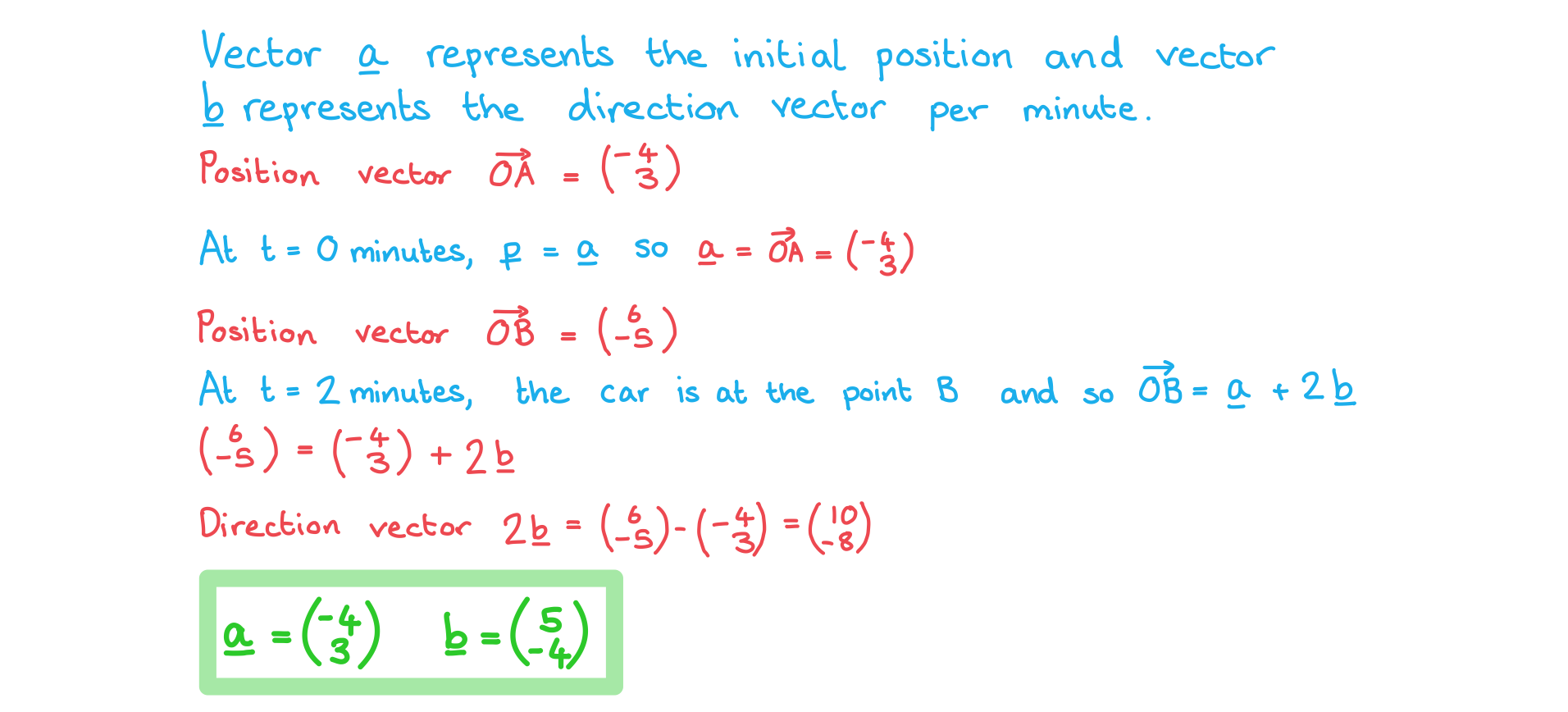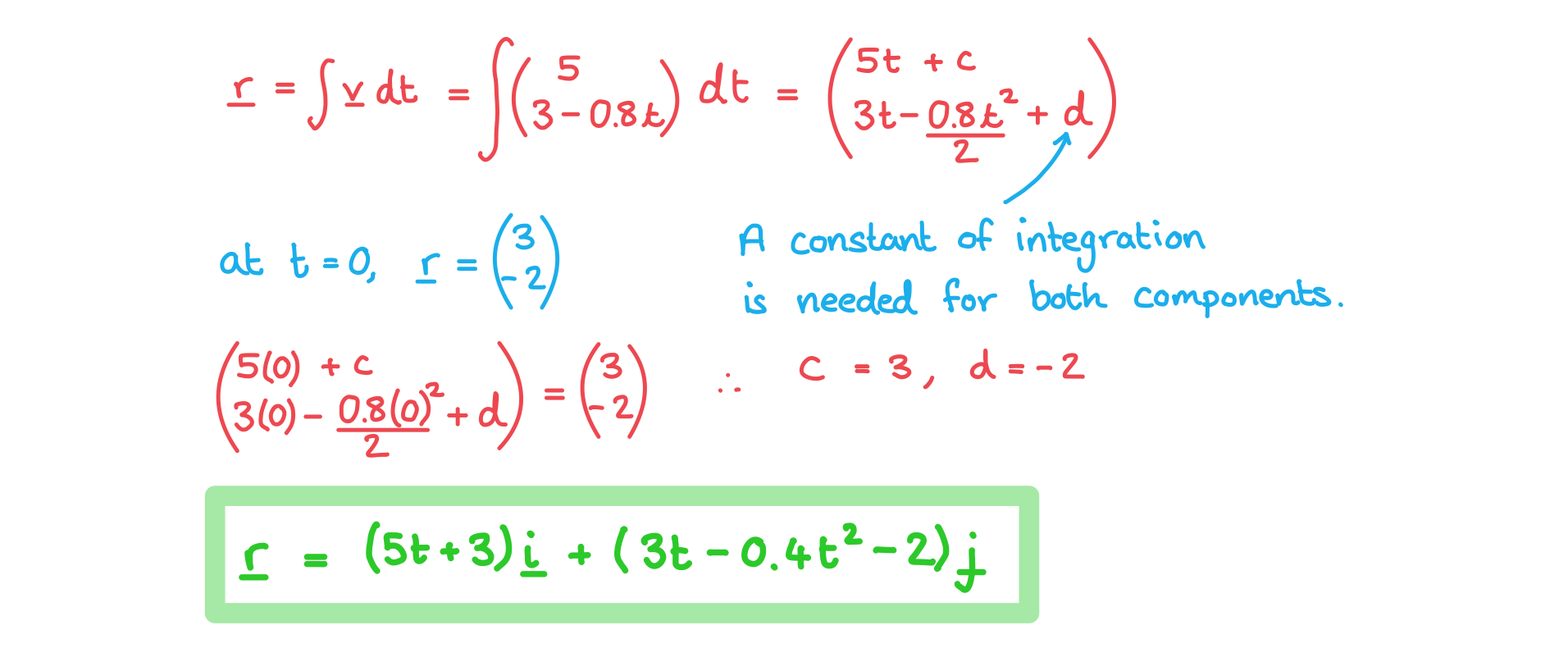Vectors & Constant Velocity
How are vectors used to model linear motion?
- If an object is moving with constant velocity it will travel in a straight line
- For an object moving in a straight line in two or three dimensions its velocity, displacement and time can be related using the vector equation of a line
- r = a + λb
- Letting
- r be the position of the object at the time, t
- a be the position vector, r0 at the start (t = 0)
represent the time, t
- b be the velocity vector, v
- Then the position of the object at the time, t can be given by
- r = r0 + tv
- The velocity vector is the direction vector in the equation of the line
- The speed of the object will be the magnitude of the velocity |v|
Worked Example
A car, moving at constant speed, takes 2 minutes to drive in a straight line from point A (-4, 3) to point B (6, -5).
At time t, in minutes, the position vector (p) of the car relative to the origin can be given in the form .
Find the vectors a and b.

Vectors & Variable Velocity
How are vectors used to model motion with variable velocity?
- The velocity of a particle is the rate of change of its displacement over time
- In one dimension velocity, v, is found be taking the derivative of the displacement, s, with respect to time, t
- In more than one dimension vectors are used to represent motion
- For displacement given as a function of time in the form
- The velocity vector can be found by differentiating each component of the vector individually
- The velocity should be left as a vector
- The speed is the magnitude of the velocity
- If the velocity vector is known, displacement can be found by integrating each component of the vector individually
- The constant of integration for each component will need to be found
- The acceleration of a particle is the rate of change of its velocity over time
- In one dimension acceleration, a, is found be taking the derivative of the velocity, v, with respect to time, t
- In two dimensions acceleration can be found by differentiating each component of the velocity vector individually
- If the acceleration vector is known, the velocity vector can be found by integrating each component of the acceleration vector individually
- The constant of integration for each component will need to be found
Exam Tip
- Look out for clues in the question as to whether you should treat the question as a constant or variable velocity problem
- 'moving at a constant speed' will imply using a linear model
- an object falling or rolling would imply variable velocity
Worked Example
A ball is rolling down a hill with velocity . At the time t = 0 the coordinate of the ball are (3, -2).
a)
Find the acceleration vector of the ball's motion.

b)
Find the position vector of the ball at the time, t.

